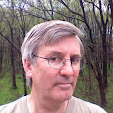
This road trip, which had begun with a powerful Kansas storm that could have come right out of a John Stuart Curry lithograph, took me through Greensburg, the small Kansas town that had been all but expunged from the face of the earth by a devastating tornado on May 4 of this year. The volunteer station was still active and a truck with a signboard solicited aid. No construction had yet begun, but the trees, at least those that still had their roots in the ground, were pushing forth new foliage from their blasted limbs, making a remarkable image of the persistence of life.

This scene called to mind a passage in Arundhati Roy’s essay, “Peace is War,” in An Ordinary Person’s Guide to Empire (South End Press, 2004), in which Roy develops a brilliant metaphor of bees descending upon an old Buffalo; a metaphor she uses to analyze the interplay of new, corporate televised and electronic news media with older, more traditional (printed?) reporting. The “crisis reportage” that covered the Greensburg catastrophe is limited to the brief period of the media's feeding frenzy, after which Roy’s bees moved on to the next crisis, leaving untold the ongoing story of Greensburg -- which I do not pretend to know -- but those greening, shattered trees are emblematic of the under-reported, post-crisis story.

I made it to Albuquerque late the same day. Other obligations kept me from visiting the Tamarind Institute of Lithography, but I did get to sample riding in this bicycle-friendly community. A bike map of Albuquerque includes an impressive network of four tiers of roadways that you might safely and legally ride you bike upon: multi-use trails, bicycle lanes, bicycle routes, and roads with wide shoulders -- something for all communities to strive toward.
I can only report two print experiences from ten days with friends and family spent hiking in the Rocky Mountains. One was perusing a stack of handsome woodcuts of Hindu images printed on Lokta paper. We found these in a Nepalese import store in Estes Park, a store that had previously offered some vivid chromolithographs of similar subjects. The other was trying to make sense of a large, halftone, offset lithograph in a shattered frame that graced one of the walls of the cabin we rented. This reproduction of a painting of a bighorn sheep in two colors bore the printed signature of Ray Harm, who, no surprise, turns out to be a wildlife artist. Harm’s website includes a quote from an article in The Filson Historical Quarterly (April 1998 Vol. 72, No.2), “Ray began releasing Limited Edition Prints in 1963 and in doing so became the founding artist of the Limited Edition Print industry as it is known today.” Limited edition etchings, woodcuts and lithographs (a.k.a "prints") came about in the nineteenth century to create a sense of rarity. More recently the term “print” has often been used in a similar way, lending the mantle of art where the word “reproduction” or "poster" might not suffice. The complete blending of these terms and the collapse of any distinction between them is borne out by the third of four definitions for the noun “print” that appears in the Oxford American Dictionary (an electronic edition that came bundled with my computer) -- the only definition that might describe etchings, woodcuts or lithographs:
3 a picture or design printed from a block or plate or copied from a painting by photography : the walls were hung with wildlife prints.





No comments:
Post a Comment